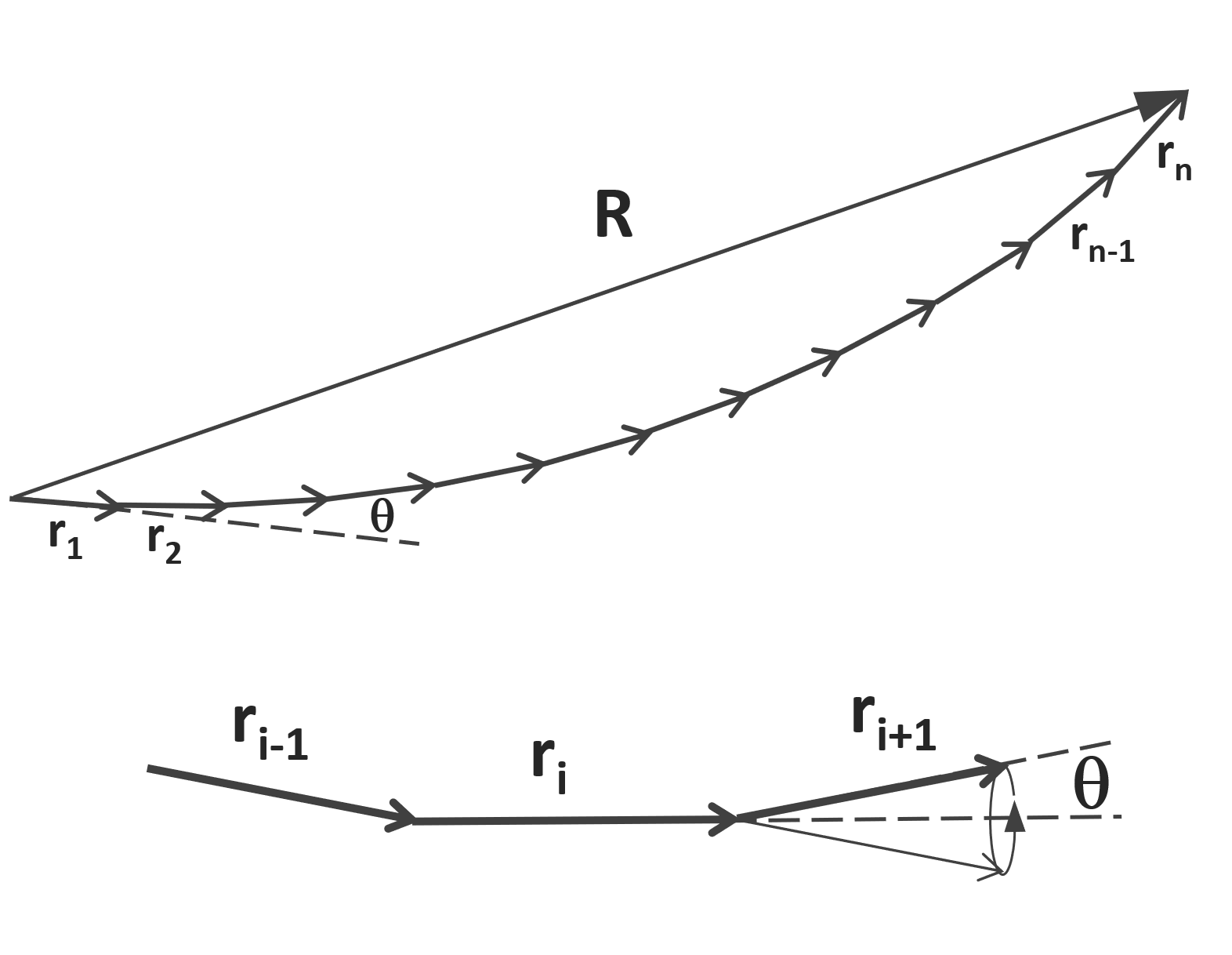Kratky-Porod or Worm-like Chain Model
The worm-like chain model was first suggested by Kratky and Porod1 in 1949 and is often called the Kratky-Porod model. It is particularly suited for describing the conformations of stiff polymer chains such as charged polyelectrolytes and double-stranded DNA molecules. The successive segments of such a chain all point roughly in the same direction; thus, the polymer adopts conformations that resemble a smoothly curved path.
The worm-like chain model is based on the assumptions that a) the bond angle (180°- θ) is very close to 180° and that b) the bond length (l) is negligible small compared to the overall length of the polymer chain (L >> l). The mean square end-to-end distance, ⟨R2⟩, of such a model chain can be calculated using the freely rotating chain model as a starting point.

The projection of the end-to-end vector, R, on the direction of the first bond vector l1 is given by

where θ is the angle between two successive bonds. In the limit Nl → ∞ this series converges to

This quantity is often called persistence length. It is the length along the chain backbone that one must travel before the next statistical unit no longer correlates with the end-to-end vector. For example, the persistence length of a freely jointed chain is one segment length and that of a rod-like chain is equal to the end-to-end distance.
The mean square end-to-end vector of a freely rotating chain is

When we combine the two expression above, we obtain
![]()
For small bond angles, cosθ ≈ 1 can be expressed by a Taylor series.
![]()
where the expansion has been truncated after the second term. Then we can make the approximation

The wormlike chain model is the continuous curvature limit of the freely rotating chain, such that the bond length l goes to zero and the number of bonds N goes to infinity, but the contour length of the chain L = Nl and the persistance length lp are kept constant:
![]()
In this limit the expression for the mean square end-to-end vector for the freely rotating chain converges to

When the contour length L of the chain is much larger than the persistance length, L >> lp, the stiffness of the chain is negligble, and the wormlike chain behaves like an ideal chain with a bond length ⟨R2⟩ / L → 2lp. The statistical bond length defined in this way is called Kuhn segment length.
References
- O. Kratky and G. Porod, Rec. trav. chim. 68, 1108 (1949)